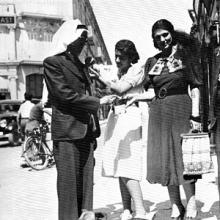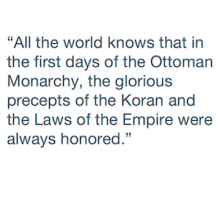Politics

The Third Incident of 14 July 1789
This engraving from the Berthault series depicts Stanislas Maillard bravely climbing on a plank over the dry moat surrounding the fortress to accept from one of the soldiers Launay’s "capitulation" of the Bastille.

Photograph of Aung San Suu Kyi, Burmese Activist
This photograph of a powerful woman, Burmese activist Aung San Suu Kyi, shows her use of national dress in a Southeast Asian political context. Aung San Suu Kyi was educated overseas and married to an Englishman. Yet she always wears Burmese national dress complete with a flower in her hair.

Analyzing Oral Histories
The modules in Methods present case studies that demonstrate how scholars interpret different kinds of historical evidence in world history. This module is based on a series of oral history interviews conducted in the mid-1990s.

Analyzing Official Documents
The modules in Methods present case studies that demonstrate how scholars interpret different kinds of historical evidence in world history. In the video below, historian Dina Khoury analyzes two official proclamations by the government of the Ottoman Empire.

Taking of the Bastille
This color print emphasizes the populace’s participation in the storming of the Bastille, showing the urban population fighting under a red banner with muskets, swords, and pikes against the royal soldiers.

Taking of Weapons at the Invalides
From the City Hall, the crowd that had gathered on the morning of 14 July crossed the Seine River and sacked the royal veterans’ hospital known as the Invalides, where it hoped to capture arms. In Berthault’s engraving, the scene appears chaotic.

Speech in the Garden of the Palais-Royal
In this artistic rendition, on 12 July 1789 Camille Desmoulins stands on a table and encourages his listeners to rise against the threat to the Estates–General. He, and others of his ilk, would be successful in bringing about the fall of the Bastille on 14 July.

Fraternity
Using a woman to represent "Fraternity" seems ironic at best, although theoretically the term might mean the community of humanity. In actuality, when the revolutionaries considered "community," they certainly thought of men far more than women.

National Assembly Relinquishes All Privileges
This image, part of a series produced to show the most important events of the Revolution, focuses on 4 and 5 August 1789, when the system of privileges came to an end. This legal structure, characteristic of the old regime, guaranteed different rights for different people.

Arrest of Louis Capet at Varennes, June 22, 1791
This print shows an angry crowd of fervent revolutionaries breaking down doors to arrest the King.